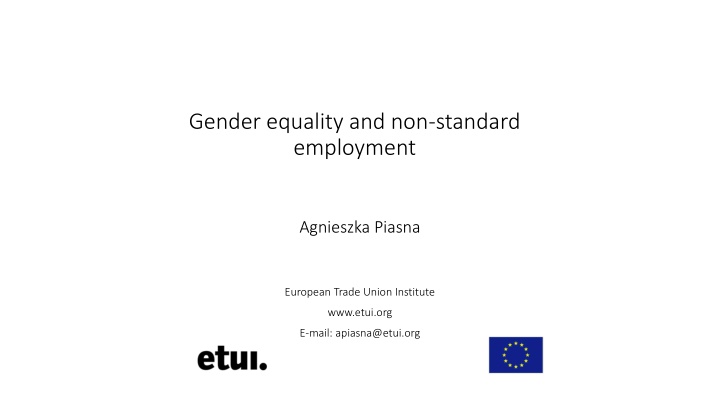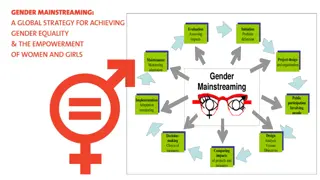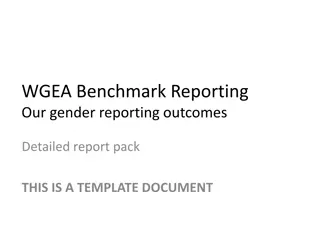Gender Equality and Non-Standard Employment Implications
Narrowing gender inequality through policy focus on flexible work arrangements, implications of non-standard employment, gendered growth in non-standard work, and the impact of the gig economy and self-employment on parenthood.
Download Presentation

Please find below an Image/Link to download the presentation.
The content on the website is provided AS IS for your information and personal use only. It may not be sold, licensed, or shared on other websites without obtaining consent from the author.If you encounter any issues during the download, it is possible that the publisher has removed the file from their server.
You are allowed to download the files provided on this website for personal or commercial use, subject to the condition that they are used lawfully. All files are the property of their respective owners.
The content on the website is provided AS IS for your information and personal use only. It may not be sold, licensed, or shared on other websites without obtaining consent from the author.
E N D
Presentation Transcript
Gender equality and non-standard employment Agnieszka Piasna European Trade Union Institute www.etui.org E-mail: apiasna@etui.org
Narrowing gender inequality Policy focus on flexible work arrangements Flexible employment forms non-standard employment Flexible hours Flexibility over the life course (reversibility) What are the implications What is flexibility needed for? For whom? Do women need (even) more flexibility in employment? Costs and risks.
Gendered growth in non-standard work Job growth, 2013-2019, EU28 Job growth, 2013-2019, EU28 Men Women Men Women 8,000 1,600 7,000 1,400 6,000 1,200 5,000 1,000 800 4,000 600 3,000 400 2,000 200 1,000 0 0 Total employment High education (ISCED 5-8) employed -200 Temporary work Solo self-employment Part-time work Multiple jobs Data: Eurostat. Second quarters. In thousands.
Gig economy Gender differences (F-M) in work status among platform workers Women more reliant on this type of work as their main (or only) source of income -25 -20 -15 -10 -5 0 5 10 15 In paid work In paid work on leave A move towards discontinuous working time, unpredictable income, lack of guaranteed work, often no social protection In education, training Unemployed and looking for work Reinforcing inequalities and a more vulnerable position of women Not in paid work (homemaker, care, other) Not in paid work (health, disability) Note: Work status in the past week. Gaps in p. points. Platform work excludes accommodation rental. Data: ETUI Internet and Platform Work Survey, 2018-19, PL, HU, BG, LV, SK.
Self-employment and parenthood Why you became self-employed? no children under 6 yes children under 6 100% 100% 90% 90% 80% 80% 70% 70% 60% 60% 50% 50% 40% 40% 30% 30% 20% 20% 10% 10% 0% 0% Men Women Men Women Neither of these reasons Neither of these reasons A combination of both A combination of both No other alternatives for work No other alternatives for work Mainly through own personal preferences Mainly through own personal preferences Data: EWCS, self-employed in EU28, 2015. Data weighted. N=5,167
Self-employment and parenthood Monthly income by labour status, full-time work 3,000 Men Women 2,500 2,000 Income (euro) 1,500 1,000 500 0 Self-employed, with employees Self-employed, no employees Self-employed, with employees Self-employed, no employees no children under 6 yes children under 6 Note: Comparison of self-employed working 35-40h/week. Data: EWCS 2015, weighted. EU28.
What jobs increase womens employment? Differences in job quality across life stages among employed women Piasna A. & Plagnol A. (2015). Job quality and women s labour market participation, Policy brief 6/2015, Brussels: ETUI. Data: EWCS 2010. EU27. Women aged 20-49.
Narrowing gender inequality Policy objective of increasing employment rate among women is not enough Not only number of jobs but their quality is important Not flexible worker but work organisation that suits gender equal society























